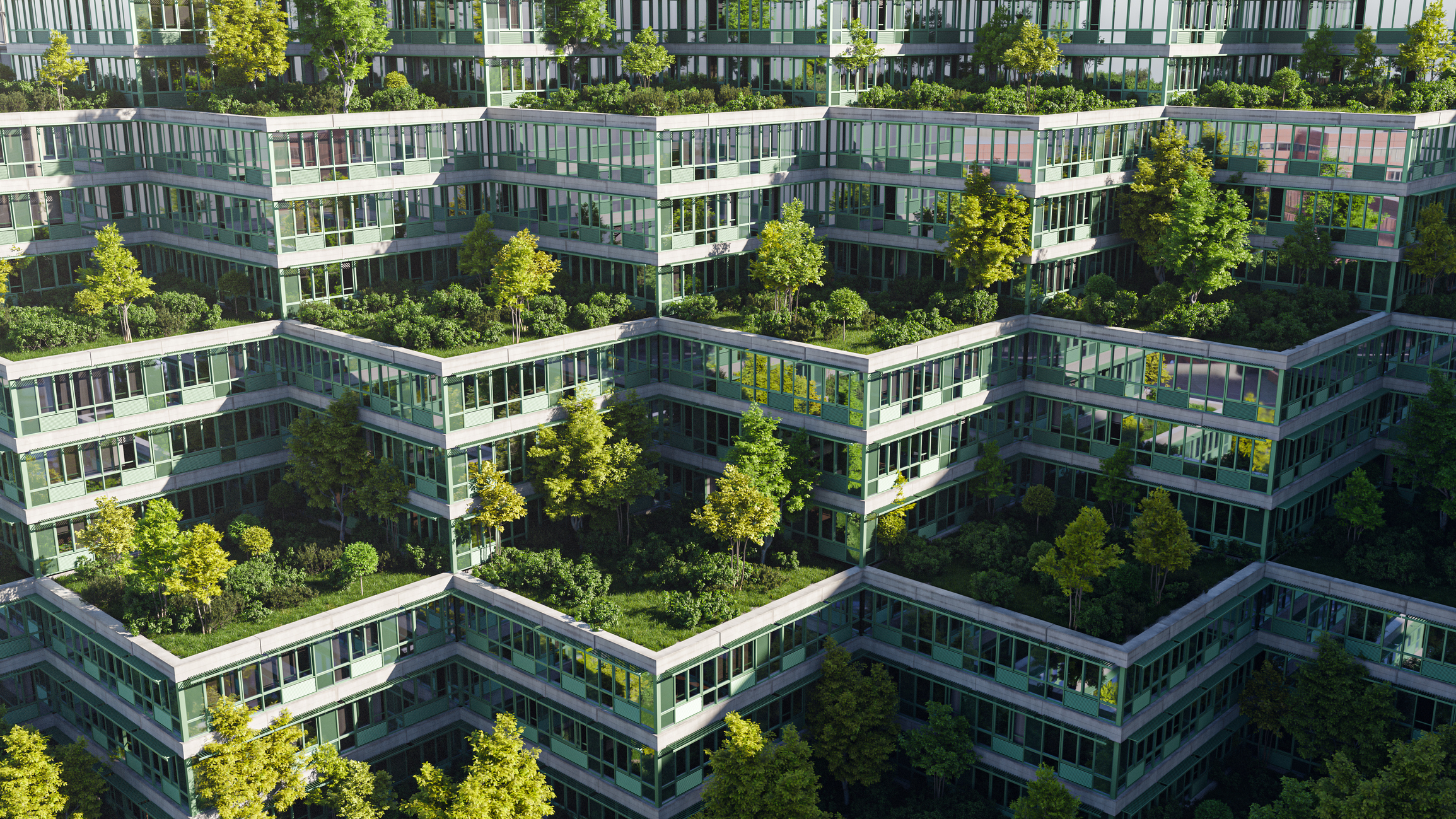Energy-Efficient Roofing Solutions for Public Sector Buildings
Public sector buildings play an important role in setting the standard for sustainability and energy efficiency. Government facilities, from schools to municipal offices, often serve as long-term assets that need to perform efficiently over decades. One of the most impactful ways to enhance the energy performance of these buildings is through the selection of energy-efficient roofing solutions. A well-chosen roof can not only reduce energy consumption and costs but also contribute to broader sustainability goals.
Here’s an overview of key energy-efficient roofing options and what procurement teams and architects should consider when specifying roofing systems for public buildings.
1. Cool Roofs: Reflecting Heat and Lowering Cooling Costs
Cool roofs are one of the most popular energy-efficient roofing solutions for public sector buildings, particularly in hot climates. These roofs are designed to reflect more sunlight and absorb less heat than standard roofing materials. By reducing the amount of heat transferred into the building, cool roofs can significantly lower cooling costs and reduce the strain on HVAC systems.
There are different types of cool roofing materials, including:
- Reflective coatings: Applied to existing roofs to enhance reflectivity.
- White or light-colored membranes: Common in flat or low-slope roofs, these materials are naturally reflective.
- Reflective asphalt shingles: Available for pitched roofs, these shingles include reflective granules.
Cool roofs are an excellent choice for buildings in warmer regions where heat absorption can be a significant issue. In addition to cost savings, they contribute to reducing the urban heat island effect, a key environmental benefit.
2. Green Roofs: Combining Insulation with Sustainability
Green roofs, or vegetative roofs, are another energy-efficient option that is gaining popularity in the public sector. These roofs are covered with plants and a growing medium, providing natural insulation while also absorbing rainwater and reducing stormwater runoff. The vegetation helps to regulate the building’s temperature, keeping it cooler in the summer and warmer in the winter.
For government buildings, green roofs offer several advantages:
- Improved energy efficiency: The natural insulation provided by the plants reduces the need for heating and cooling.
- Stormwater management: Green roofs help manage stormwater by absorbing rain, which can reduce the need for expensive drainage systems.
- Aesthetic and environmental benefits: In addition to being energy-efficient, green roofs offer environmental benefits such as improving air quality and providing habitat for wildlife.
Although the upfront cost of installing a green roof may be higher than traditional options, the long-term benefits in energy savings and environmental impact make it a worthwhile investment for many public sector projects.
3. Solar Roofing: Harvesting Renewable Energy
Solar roofing solutions combine energy efficiency with renewable energy production, making them a powerful option for public buildings. Solar panels, when installed on rooftops, harness sunlight to generate electricity, reducing the building’s reliance on traditional energy sources.
Two common approaches to solar roofing include:
- Traditional solar panels: Installed on top of the existing roof, these panels are widely used for their proven efficiency in converting sunlight into electricity.
- Building-integrated photovoltaics (BIPV): A more integrated approach where solar cells are incorporated directly into the roofing materials, such as solar shingles.
For government buildings, solar roofing offers the potential for significant long-term energy savings, especially when paired with incentives like tax credits or rebates. Solar roofs can also help public sector facilities meet renewable energy targets set by federal, state, or local governments.
4. Insulated Roofing Systems: Enhancing Thermal Performance
In colder climates or regions with significant temperature fluctuations, insulated roofing systems are critical for maintaining energy efficiency. By providing superior thermal resistance, these systems reduce heat loss in the winter and heat gain in the summer, helping to stabilize indoor temperatures and minimize energy consumption.
Insulated roofing systems typically consist of high-performance insulation materials, such as:
- Polyisocyanurate (Polyiso): A popular choice for commercial and public buildings, Polyiso offers high thermal resistance and is often used in low-slope roofs.
- Extruded Polystyrene (XPS): Durable and moisture-resistant, XPS is another excellent option for insulation in roofing systems.
By specifying insulated roofing systems, public sector buildings can reduce heating and cooling costs year-round while maintaining comfort for building occupants.
5. Standing Seam Metal Roofs: Longevity and Reflectivity
Standing seam metal roofs are known for their durability and longevity, often lasting 40-70 years with minimal maintenance. In addition to their long lifespan, metal roofs can be highly energy-efficient when combined with reflective coatings.
Benefits of standing seam metal roofs for public buildings include:
- High reflectivity: Metal roofs can be coated with reflective paints or finishes to minimize heat absorption, similar to cool roofs.
- Longevity: The durability of metal roofs reduces the need for frequent repairs or replacements, making them a cost-effective solution over time.
- Recyclability: Metal roofs are typically made from recyclable materials, contributing to the building’s sustainability goals.
For public sector buildings seeking both energy efficiency and long-term value, standing seam metal roofs are an excellent option.
6. Single-Ply Membranes: Lightweight and Energy-Efficient
Single-ply membrane roofing systems, such as TPO (thermoplastic polyolefin) or PVC (polyvinyl chloride), are widely used for flat or low-slope roofs in public buildings. These membranes are lightweight, durable, and energy-efficient, offering excellent reflectivity and UV resistance.
TPO, in particular, has gained popularity for its combination of energy efficiency and cost-effectiveness. It reflects sunlight, reducing heat gain in the building, and is also resistant to ozone, UV radiation, and chemical exposure.
Single-ply membranes are ideal for public buildings that require a durable, energy-efficient solution at a relatively low cost.
By incorporating these energy-efficient roofing solutions into public sector buildings, procurement teams and architects can significantly reduce energy costs, extend the lifespan of roofing systems, and contribute to environmental sustainability. Whether opting for cool roofs, green roofs, solar panels, or insulated systems, these choices not only benefit the building’s performance but also demonstrate a commitment to responsible, long-term stewardship of public resources.


